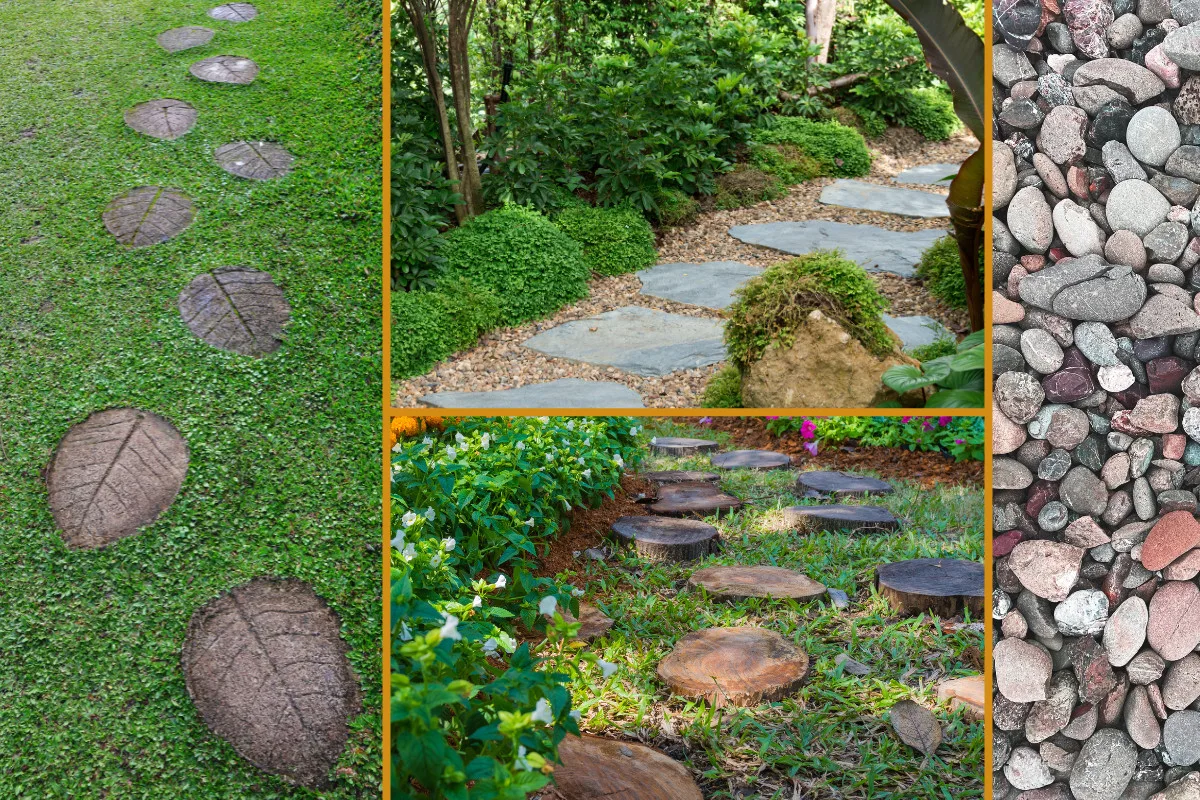
Where there are multiple garden path ideas, there’s bound to be at least one beautiful garden walkway that can be yours for the DIY-ing. All it takes to create a garden path are materials, hands-on labor, time and a bit of creativity.
Why Create a Garden Path?
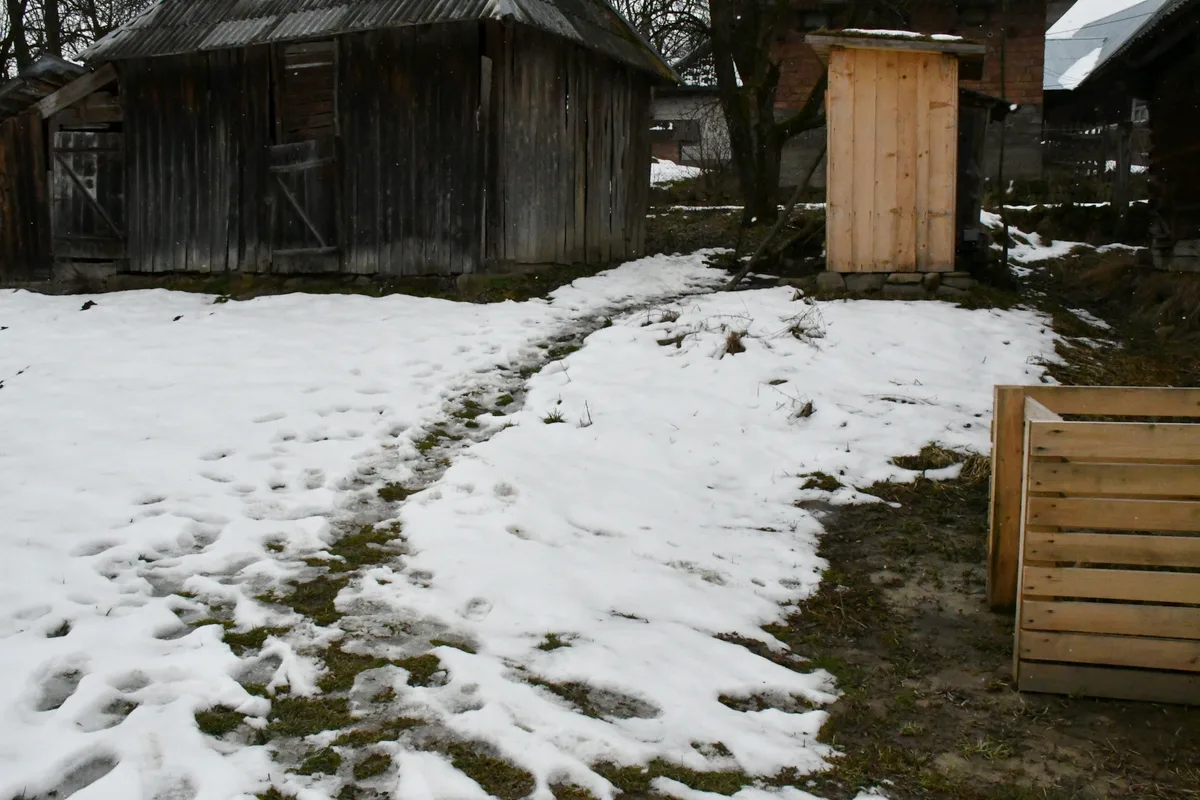
The first thing you should ask yourself is how often do you follow the same routes – to the shed, to the vegetable garden itself, or to a bench beneath a tree? Chances are good that you hardly deviate from those linear and curved patterns.
If you want to get technical about it, walkways and paths provide a transition from one space to another. At the same time, they help to define spaces as they bring order and balance into a landscape.
On the more practical side, garden paths allow you to avoid stepping in slippery mud after the rain or ice in the winter.
They provide a direct route to the places you know and love best. And they prevent the soil from wearing thin, which would lead you right back to some muddy steps if you forgo the path idea altogether.
Look at the steps to the entrance of our home.
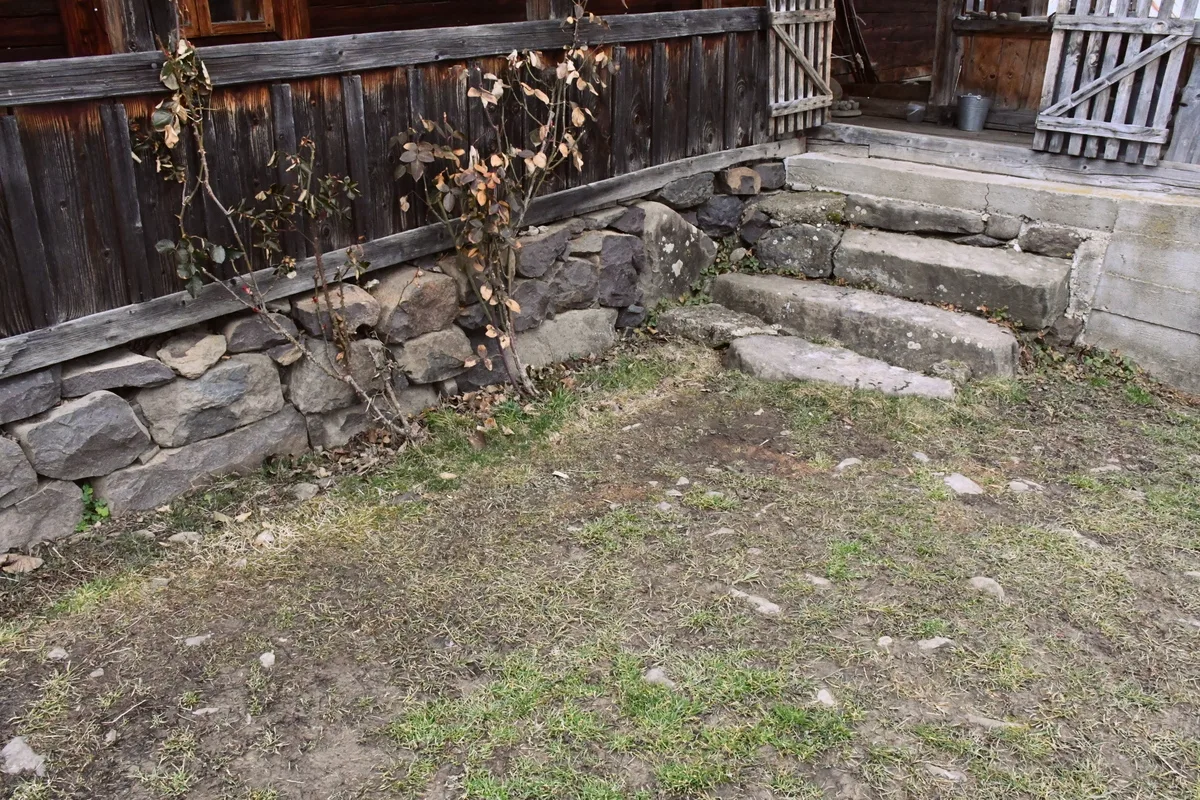
It’s all good and fine once you reach the rocks, but until then, it’s a bit muddy when the snow melts and when it rains, which it does quite often.
I wonder if we should install some sort of pavers as a landing?
How Wide Should a Garden Path Be?
As far as garden paths go, my advice is to make it at least as wide as a wheelbarrow. How else would you transport compost and mulch to the garden?
Others say it should be wide enough to walk side-by-side with someone. It depends on how long the path is and where it leads. Three feet is usually a sufficient width for a main garden path, but if you have plenty of space, this can go all the way up to five feet.
Smaller offshoots can be narrower. As long as you make the trail interesting, people will follow it.
Advice on Carrying Out Your Own Garden Path Ideas
Before jumping into a project, you’ll want to check out some of the garden path ideas listed below.
You’ll also want to take into consideration:
- Materials – What will you use? Brick, wood, stone, gravel or something else?
- Construction – Do you have the skills and energy to lay the path, or will you need to hire someone?
- Design – Can you DIY the entire project, or do you want a landscape or garden architect’s expertise? Make sure that your garden path is visually enticing.
- Cost– The more you do yourself, the more you’ll save; however, you may also spend a lot of time doing it.
Ultimately, the size of the chore and your abilities will dictate whether you need help or not with installing a garden path.
It’s easy enough to lay down several feet of gravel on your own. On the other hand, natural stone slabs require heavy lifting, though they are perhaps one of the most beautiful and long-lasting materials out there.
Let’s look at some garden path ideas that cross all walks of life, and all walks of gardens too. You’re sure to find something that fits in nicely with your garden space and your estimated price range.
Garden Path Ideas for Natural and Stylish Walkways
Step your way across these paths, seeking out the beauty in bricks, plants, stone steps and more.
1. Allow Plants to Grow Between the Cracks
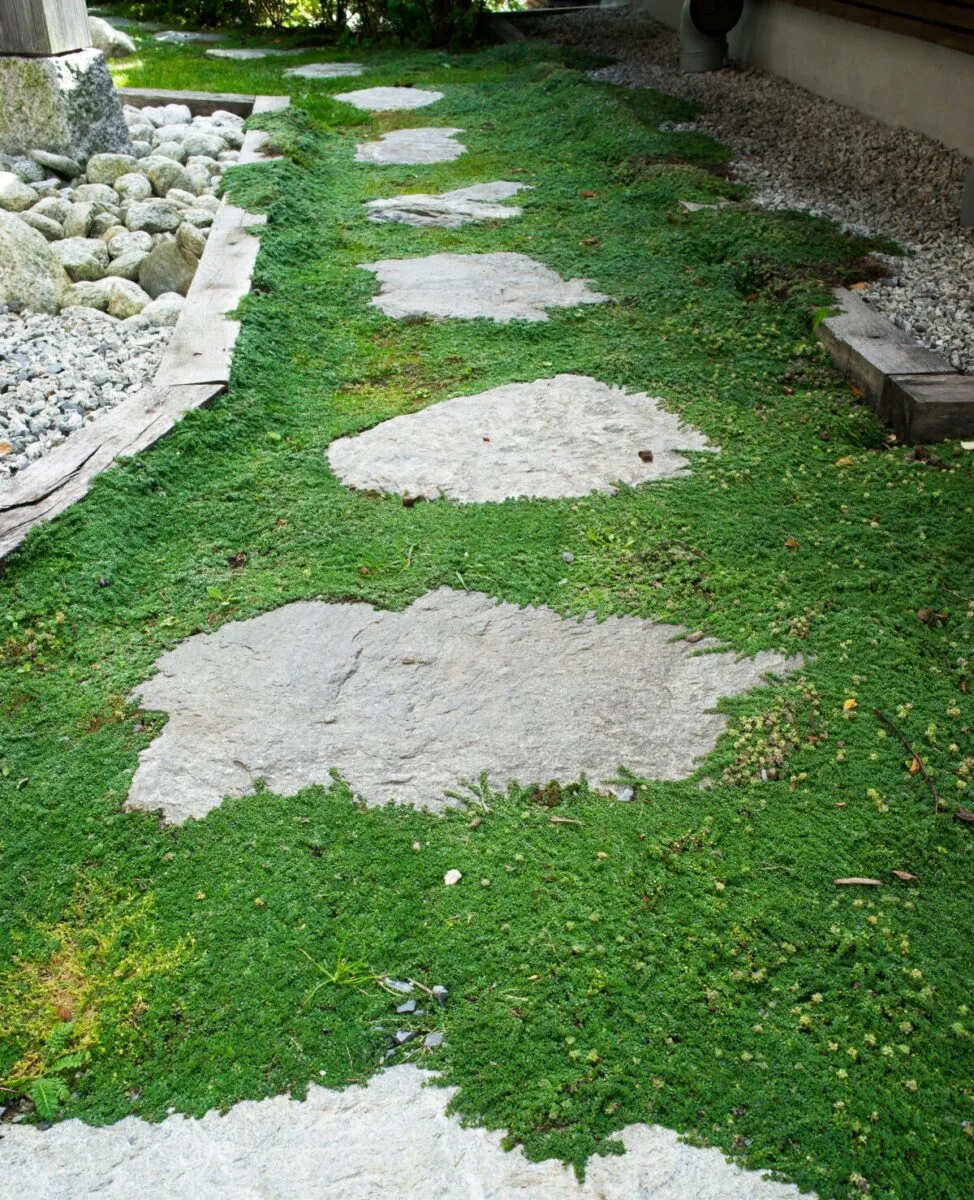
If your garden already has a paved path, yet it feels a bit outdated, there’s still one thing left to do – allow plants to come up between the cracks.
I’m not talking about weeds here. Rather, intentionally grow plants that thrive in small spaces.
In the right place, they can even wander off the path, ever so slightly, to add visual interest to the garden. All you need to do, is spread a little sand between the cracks, sprinkle seeds and water them in.
Here are some plants that don’t mind growing in cracks:
Naturally, the plants you choose for your walkway will either tolerate full sun or prefer some shade. Plant those which are the most likely to grow.
2. Wood Chips
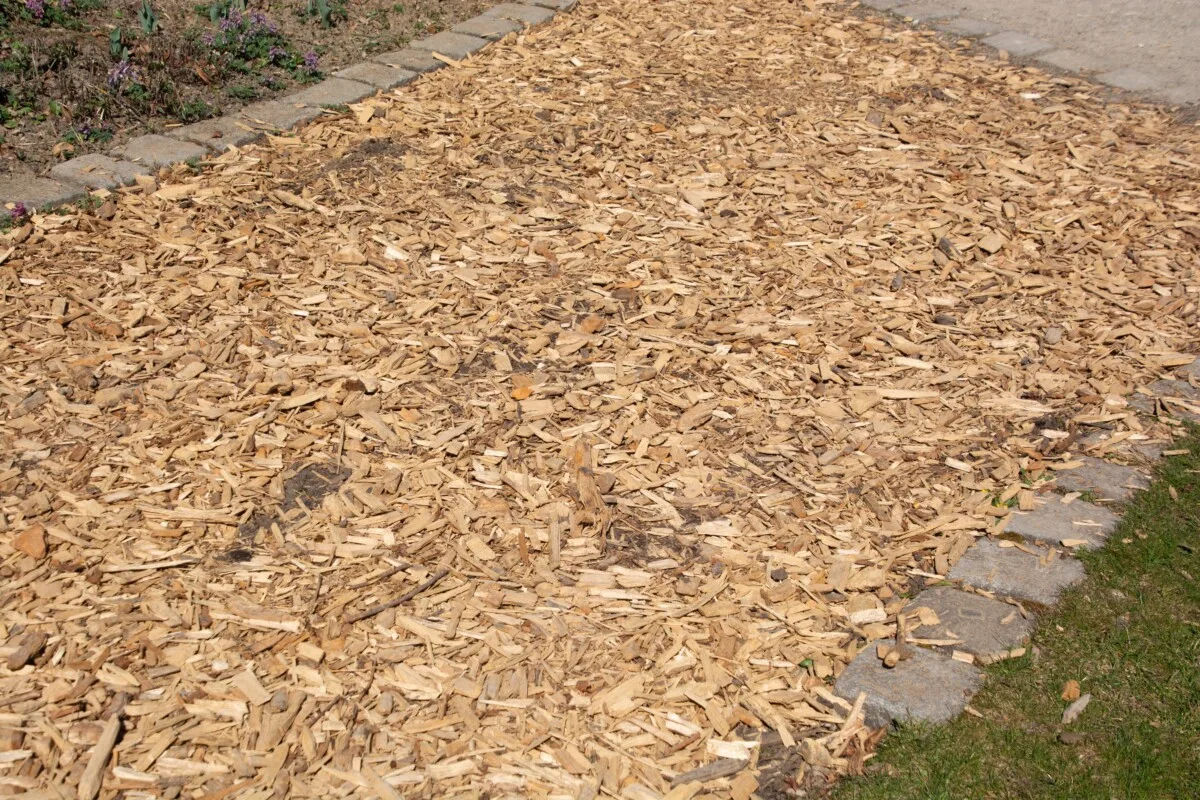
Wood chips have at least 20 uses in the garden and around the homestead. If that’s the material you have easy access to, or you happen to have it in abundance, use it.
Wood chips are typically a low-cost option for making walkways and garden paths, yet they also add an element of natural beauty. Try and stick with the undyed chips, though; they are far better for the landscape.
Oftentimes, a wood-chipped path will benefit from some sort of edging, so it doesn’t spill out into the grass or garden beds beyond.
If you are prone to walking barefoot, I know from experience that they aren’t always pleasant to walk on. On bare feet, they tend to be poky and rough. With shoes or garden clogs, this isn’t an issue at all.
3. Reclaimed Bricks
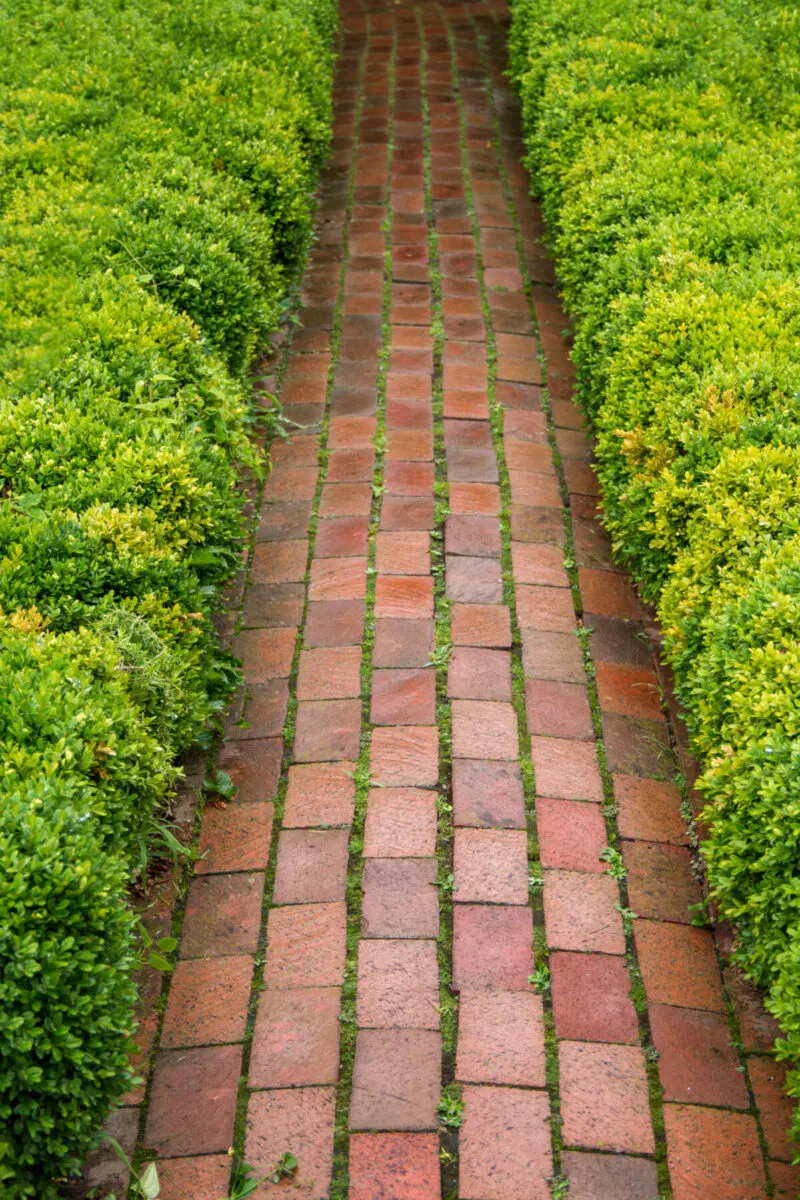
Outside of large slabs of flagstone, reclaimed bricks are among my favorite materials for garden paths. That being said, it can go terribly wrong if they aren’t laid properly.
I know of a reclaimed brick garden path that is terribly bumpy – and super slippery when wet – after only a handful of years of being walked and driven on.
If you choose this garden path idea, I know you’re going to do it right. There’s plenty of advice already out there, so I’m not going to bore you with the details. I’ll just give you several links instead:
- How We Built a Reclaimed Brick Garden Path – A Tutorial by Life with Holly
- DIY: Make Pathways From Used Brick – Ben Riddering
- How to Lay a Patio from Reclaimed Bricks – Simply the Nest
- Building a Reclaimed Brick and Stone Pathway – Knorpp and South (video)
4. Gravel Walkway
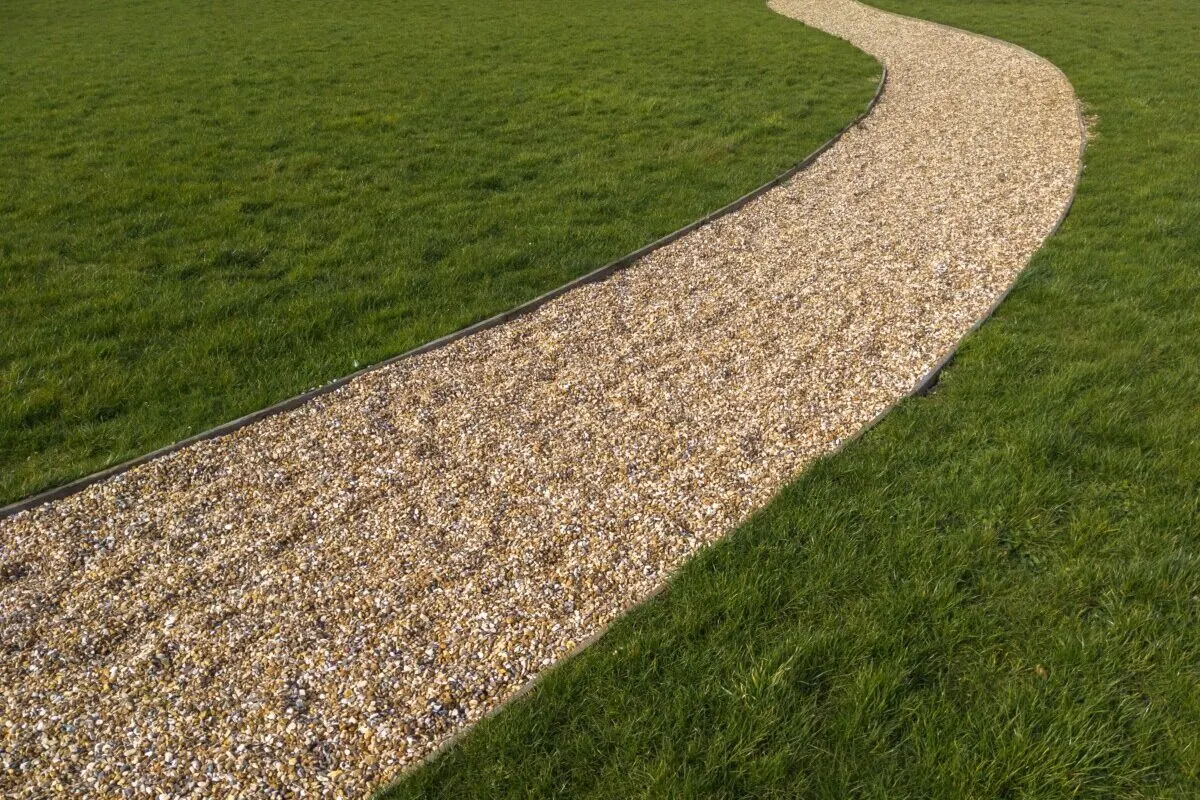
I’m sure to be stating the obvious, but gravel paths are still a thing. And I suspect they always will be. After all, the world seems to be made from stones.
Not only are gravel paths porous, meaning that they can help diffuse runoff from heavy rainfall, but they are also easy to install, maintenance is minimal (weeding is among the biggest chores), and the cost is often lower than other materials too.
The colors and sizes of rocks make them an ideal natural material for garden paths.
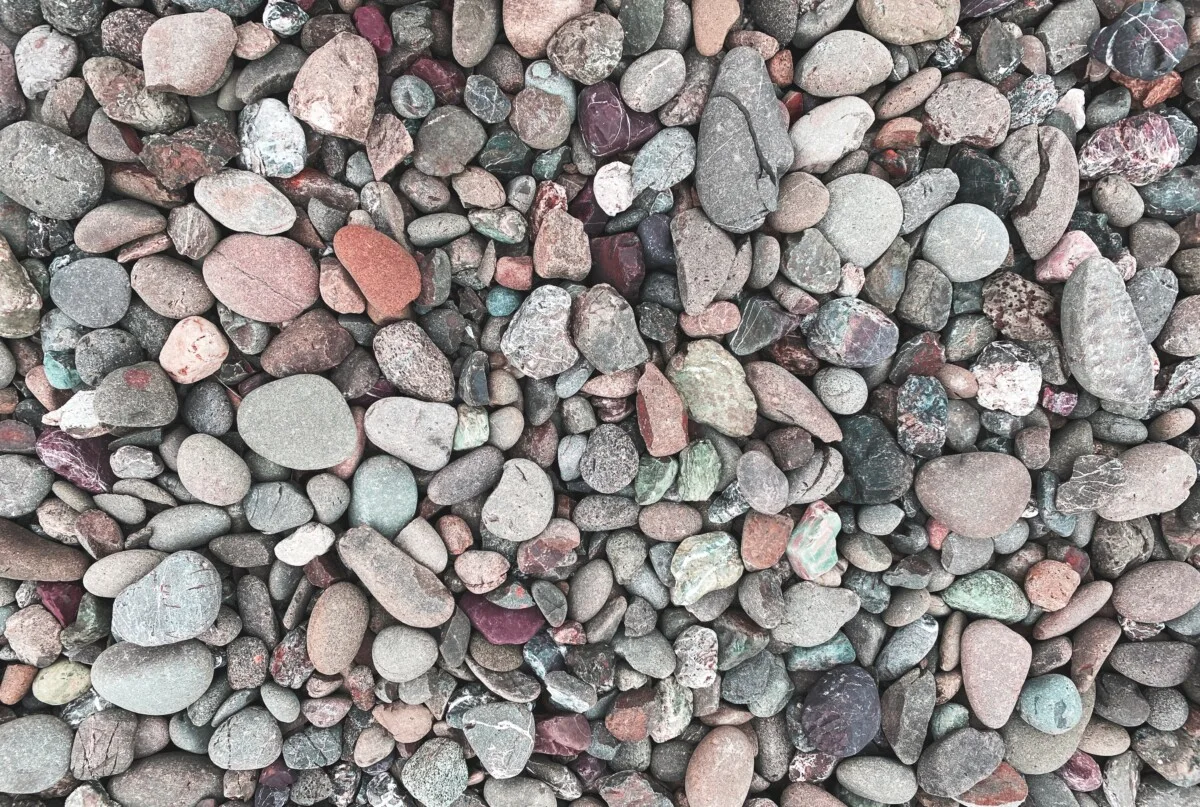
You’ll find several colors in a stone palette to choose from – white, brown, beige, green, grey, gold, black and red. These can be used individually or interchangeably, it’s all up to your eye for design.
As an added bonus, if security in your area is a concern, there’s no mistaking the sound of someone walking on gravel.
5. Flagstone Walkway
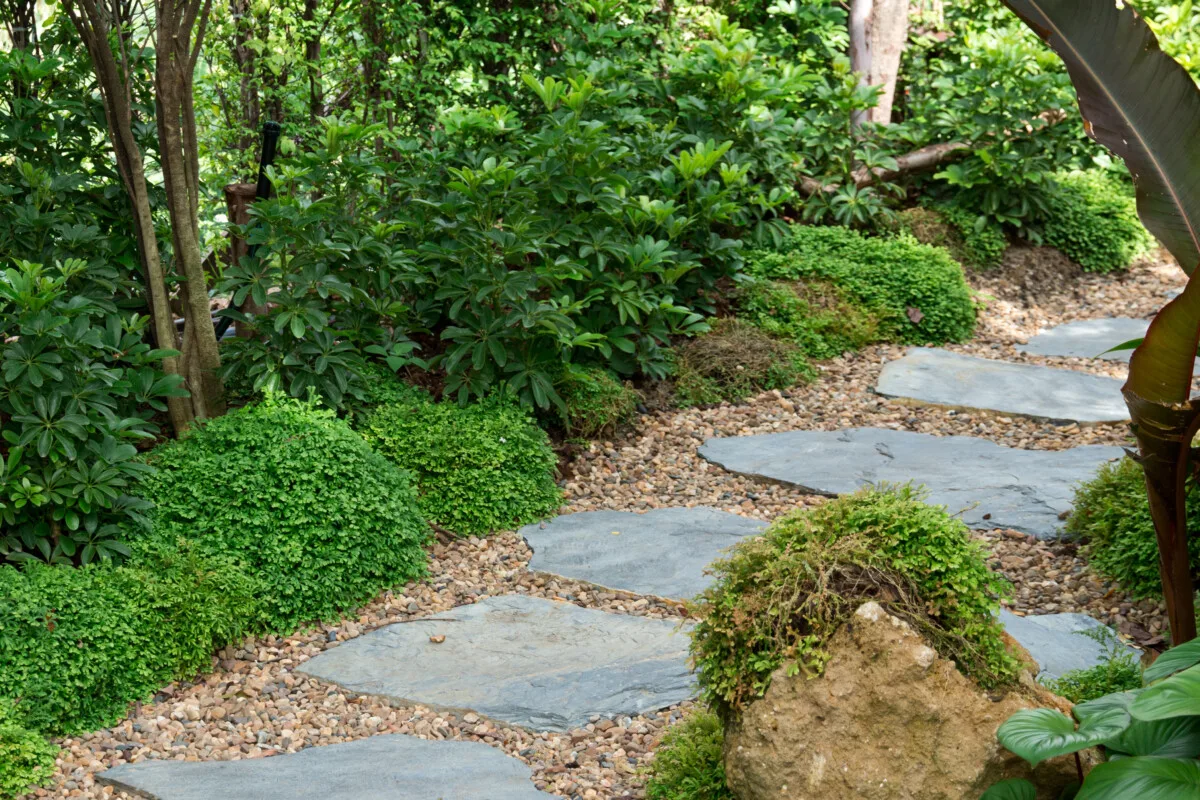
To lay a flagstone walkway, you’re going to need some tools (spade, shovel, hand tamp, small sledgehammer, carpenter’s level) as well as materials (edging, sand, flat stone, gravel, etc.).
If you have a lot of surface to cover, you might already see how this is going to be one of the more expensive options on our list of garden path ideas.
When you do choose to go this route, you’re in for some hard work and a beautiful, long-lasting pathway.
For starters, you’ll need to choose your stone, usually about 2-3″ thick. Flagstone refers to a flat stone slab, rather than a specific rock. To keep your costs minimal, it’s best to choose one that is locally available.
After you’ve chosen your materials, all that’s left to do, is lay out the walkway, dig the path, apply edging and landscape fabric (or not if you’d like grass to come up between the cracks) and add sand before laying out the paving stones in a nice and orderly way.
6. Stepping Stones
If you don’t want to go all out flagstone, you can insert stepping stones directly in the grass or in a bed of gravel or mulch, if you prefer.
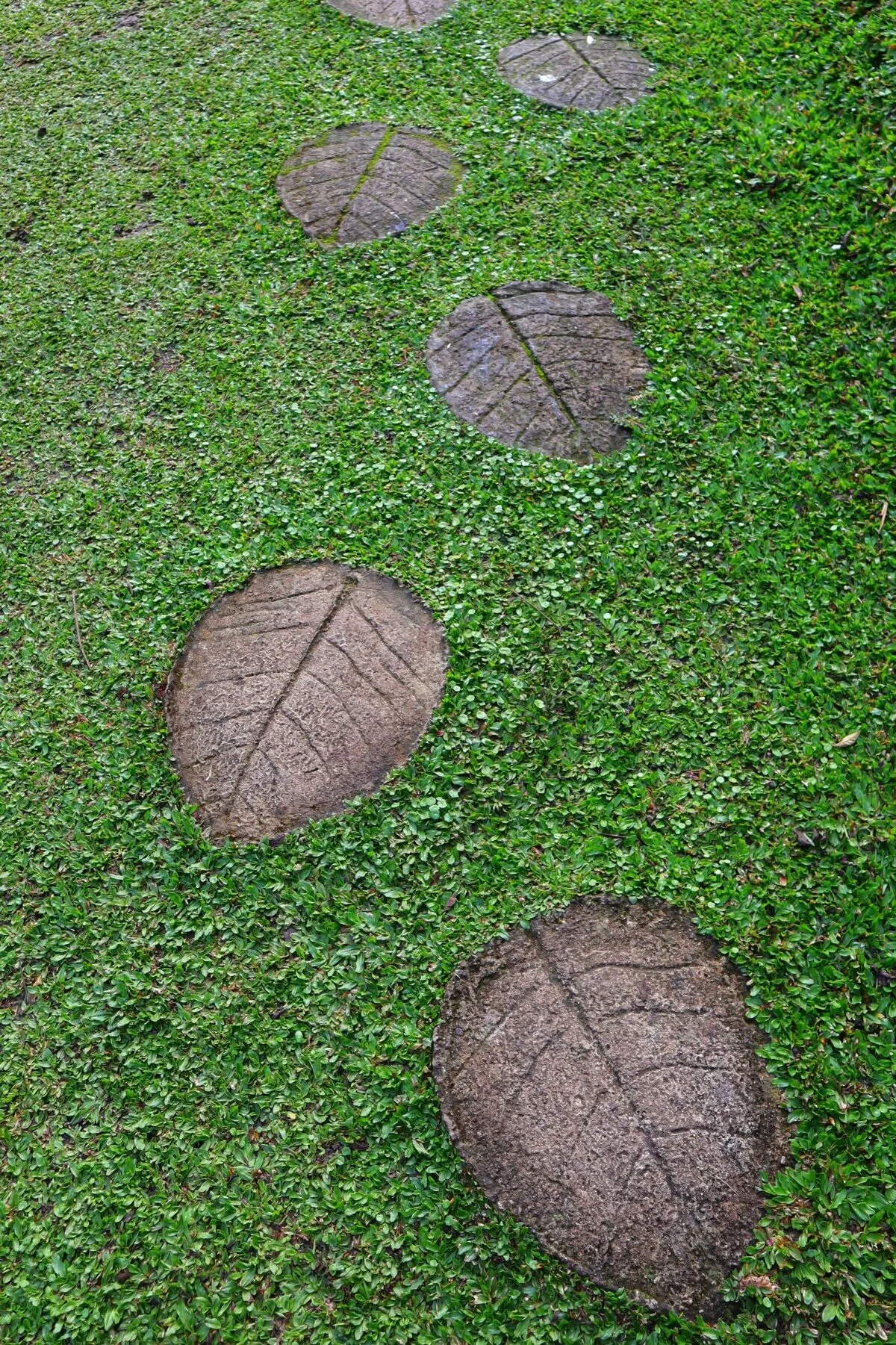
For the most part, people seem to prefer round stones, but really, anything goes. You can even get stepping stones in the shape of states, in the shape of dragonflies, or bees. Linden leaves, maple leaves, oak leaves, rhubarb leaves. You name it, it’s already been made. And if it hasn’t, you could probably have your dream stepping stones special ordered.
If you have the materials and time, you can even make your own personalized garden stepping stones. And if you find that they turn out pretty good, you might even consider making some to sell as a way to make money from your homestead. See, there’s a bright lining to even the simplest of garden paths.
7. Mosaic Garden Walkway
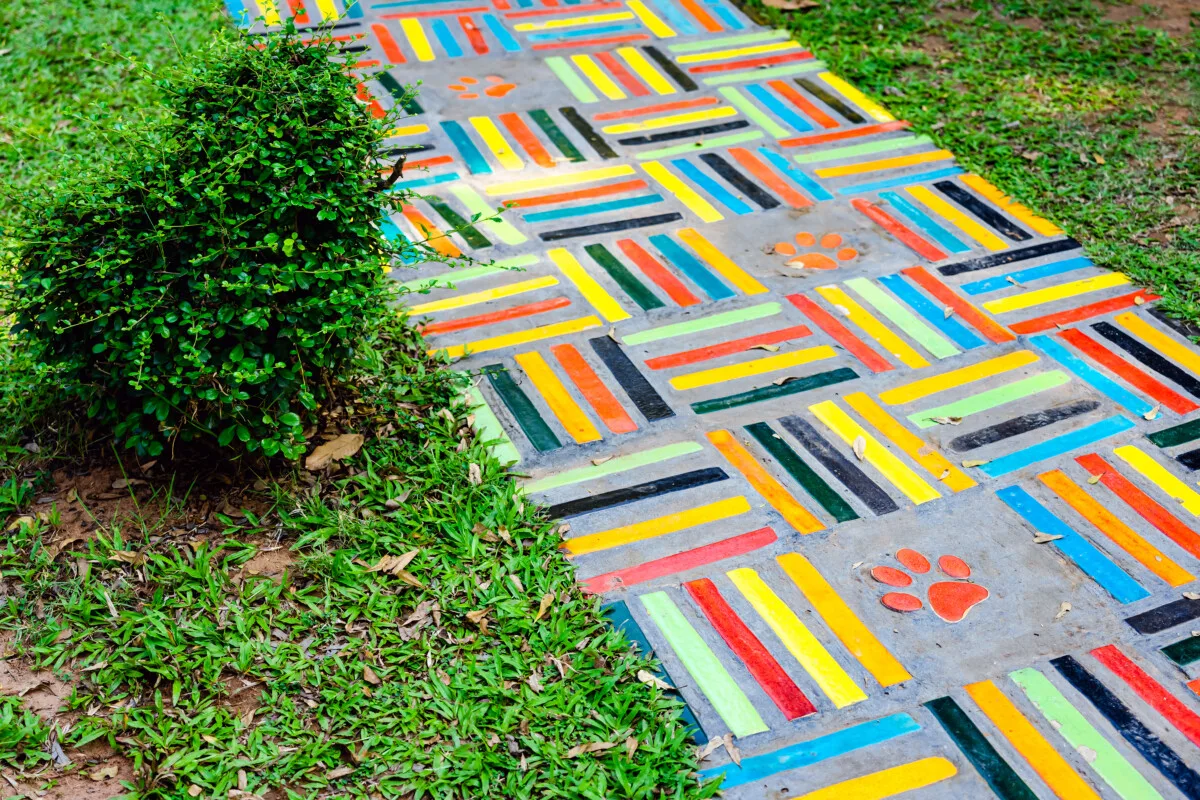
This one is for the creatives and art lovers out there.
On a mosaic garden walkway, you can let your imagination go wild. The largest ones I’ve seen appear to be like outdoor stone rugs, filled with different colored rocks in all shapes and sizes.
They can cover an entire patio area or wind like a snake into your backyard garden, enticing you to explore further with every step. You can also simplify and use mosaics as stepping stones in the garden path idea above.
Even better yet, you can install symbols in your mosaic walkways. You can represent the seasons or the phases of the moon. Add in some fun elements of water, the sun, or a tree of life.
Mosaics are a really wonderful way to personalize your garden space.
8. Pavers in a Diamond Pattern
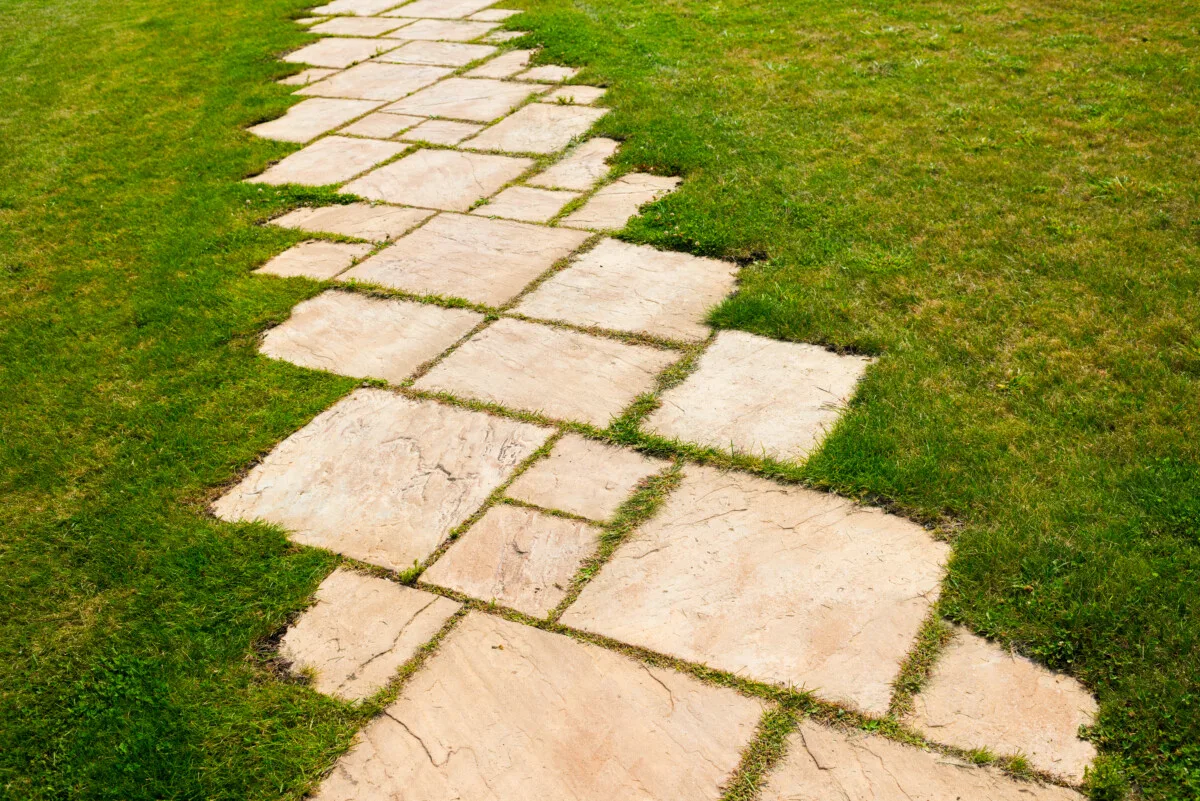
Often, our minds take the simplest route and stack things as we best see them fit. Side-to-side and back-to-back. Rarely do we think about tip-to-tip.
When you lay stepping stones in the latter way, you end up with a more elegant walkway. Maybe a little less practical in the long run, yet playful and stylish instead.
If you are able to lay the stones in the ground, you’ll be able to mow right over them without a hitch.
9. Wooden Walkway
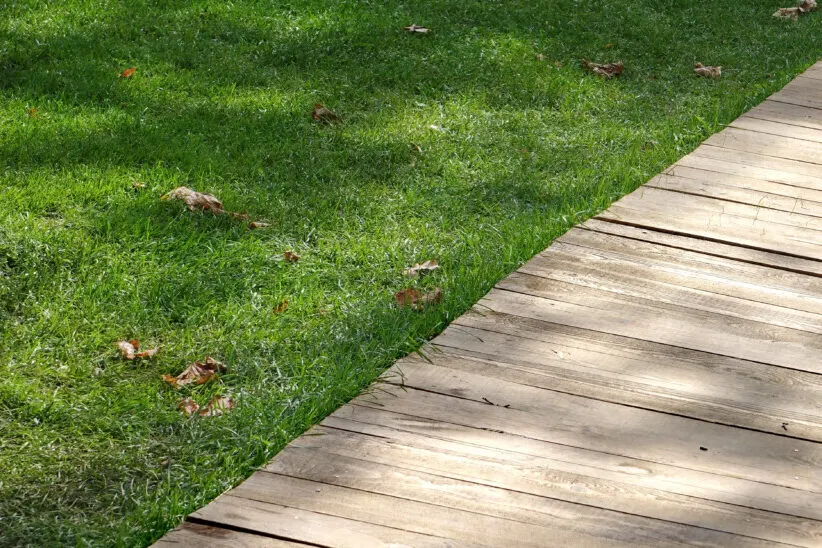
We haven’t really talked about wood yet, outside of wood chips, that is.
Wood chips aren’t for every situation, though. I mean, have you ever tried to mow by the edge of them?
It’s not as bad as with gravel, though loose things are known to fly in random directions when caught under the blades of any mowing device. I’ve mowed my fair share of lawns on push and riding mowers, as well as mowing greens, tees and collars on a golf course, so unless there’s edging, it’s best to be careful with wood chips and gravel.
One way to get around this is to have a more dedicated path. One that uses decking boards instead. This could be surrounded by gravel on each side for a serious-looking walkway, or you could plant flowers, bushes and low-growing plants along each side to add immeasurable beauty to the landscape.
This garden path idea gets bonus points for yards with slopes. The boards can easily be turned into steps where needed. It also functions well in wet areas.
10. Tree Slice Pathway
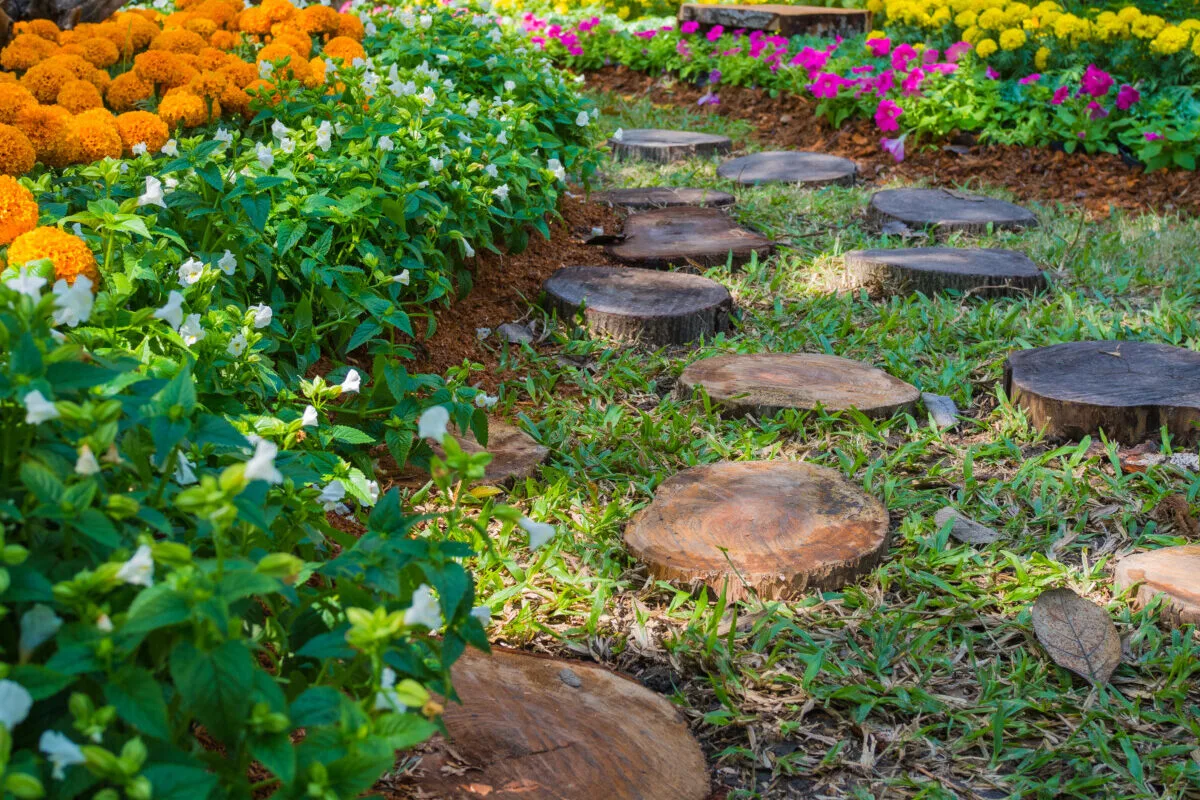
If you happen to have a couple of extra tree stumps standing around or some trees that fell in a storm, why not make a pathway with them? There’s nothing to waste, for the parts you can’t use can still go onto the campfire.
Now, tree stump pathways are a tad rustic. I suppose that’s what people like about them.
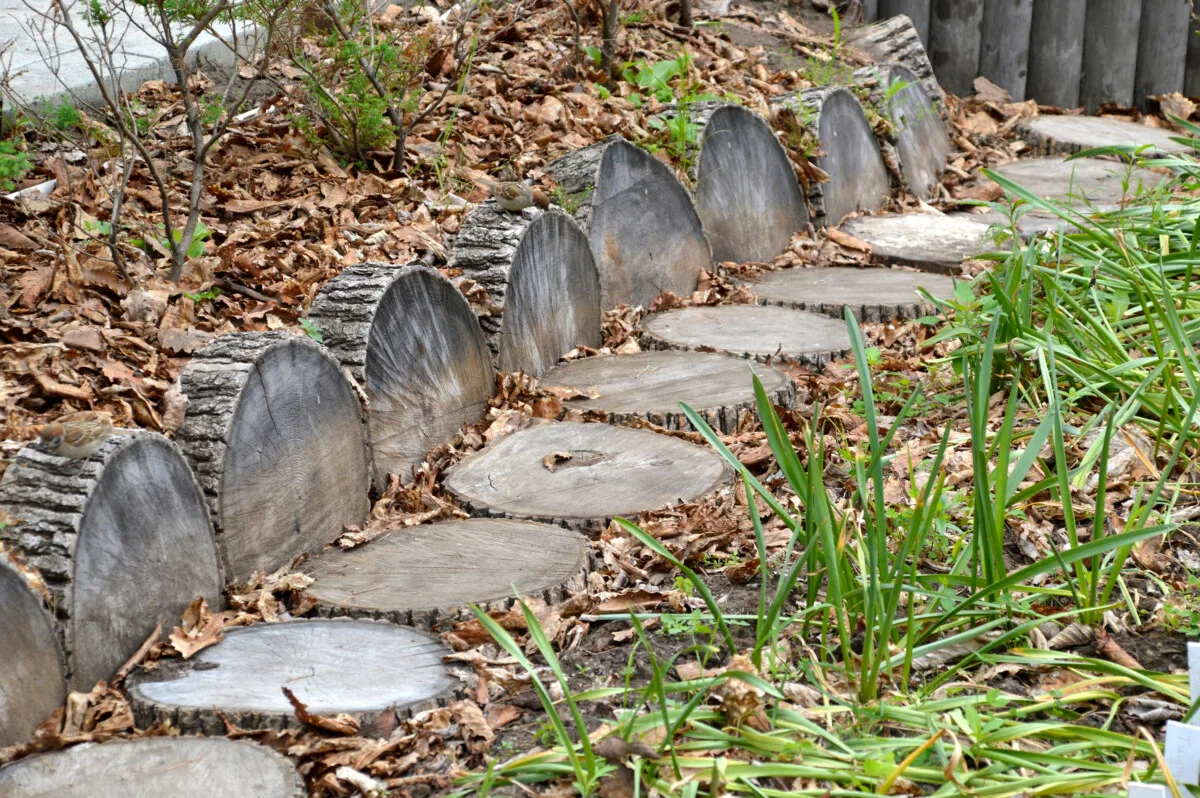
Decide for yourself whether or not it’s right for your garden by watching a few videos:
- Simple WOODEN Garden WALKWAY _ How to make garden path from tree cuts – Eco Crafting
- WOODWORK | HOW TO BUILD A DIY WOODEN WALKWAY – Smoky Mountain Outpost
- and this last one just for fun: DIY floor, Log floor, Unique flooring, Wood flooring, Handmade floor, Rustic floor, Natural flooring – Latvian Wood Artisan
Combine a Source of Light With Garden Path Ideas
When all is said and laid down, it may be nearing dusk if you’ve been laying your garden path under the sun all day long. If you ever need to go outside in the evening, and you should, refrain from taking a flashlight. Instead, highlight your path with some garden lights.
Lights in the right location will enhance your experience of being out after dark. Not only will they light your way along a path, but they’ll also give off a cozy glow around patios and outdoor dining spaces.
Garden lighting is an entire topic of its own, you can find a plethora of outdoor lighting ideas here.
Before you go, there’s one last thing to consider before installing a new garden path.
The Importance of Non-slip Surfaces for Garden Paths
The whole point of laying down a more permanent garden path is to make it less slippery than mud. You may know from your own bathroom or spa experiences that not all tiles are alike. Some are more slick than others on bare or flip-flopped feet. This applies to paving materials too.
Try to test out a few samples before your path gets wet.
Another aspect to consider when choosing materials is whether or not you need to provide wheelchair access.
Anti-slip surfaces should also be prioritized when your home includes elders and children.
Now that you have several options, what does your ideal garden path look like?

Get the famous Rural Sprout newsletter delivered to your inbox.
Including Sunday ramblings from our editor, Tracey, as well as “What’s Up Wednesday” our roundup of what’s in season and new article updates and alerts.

